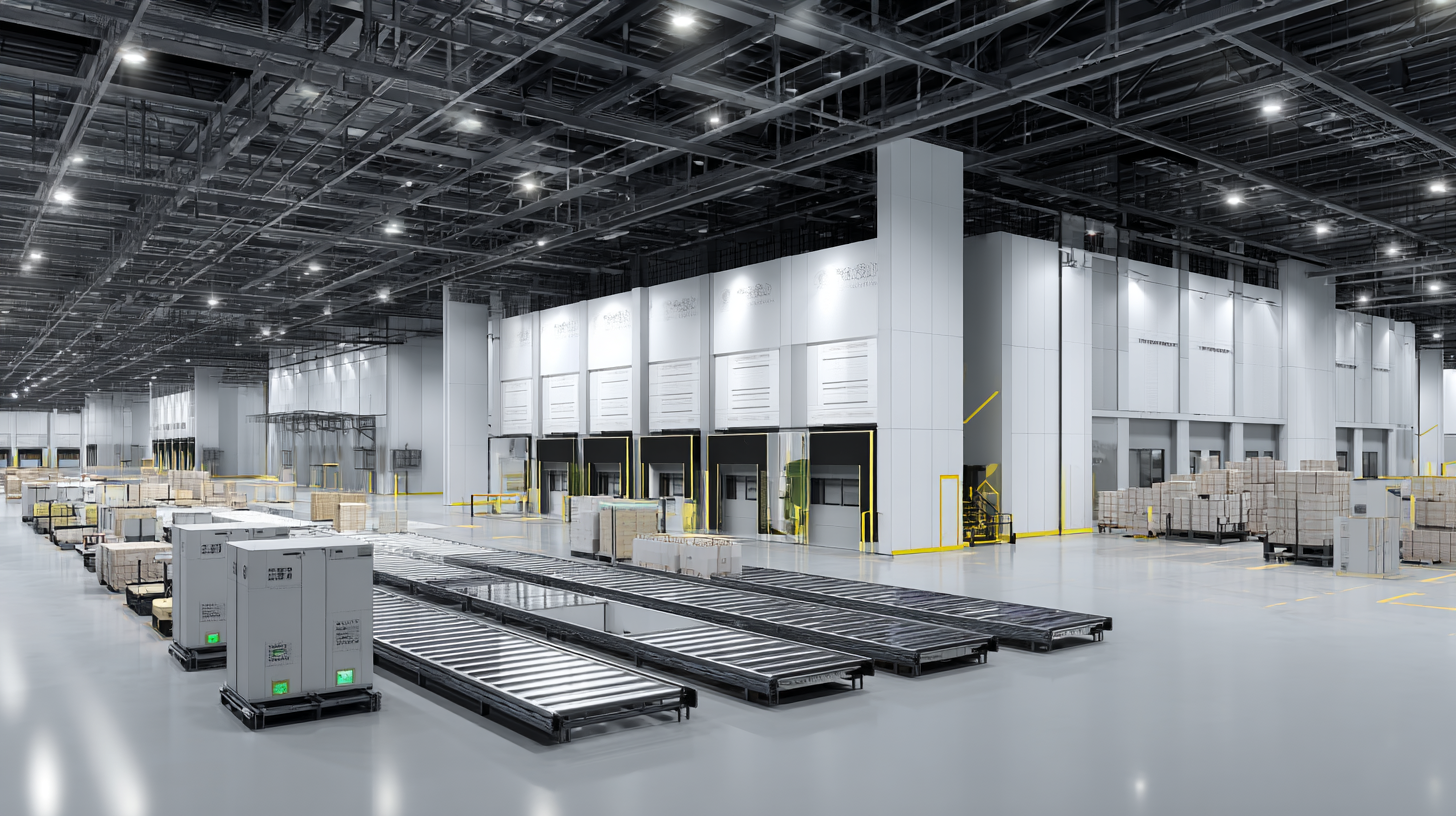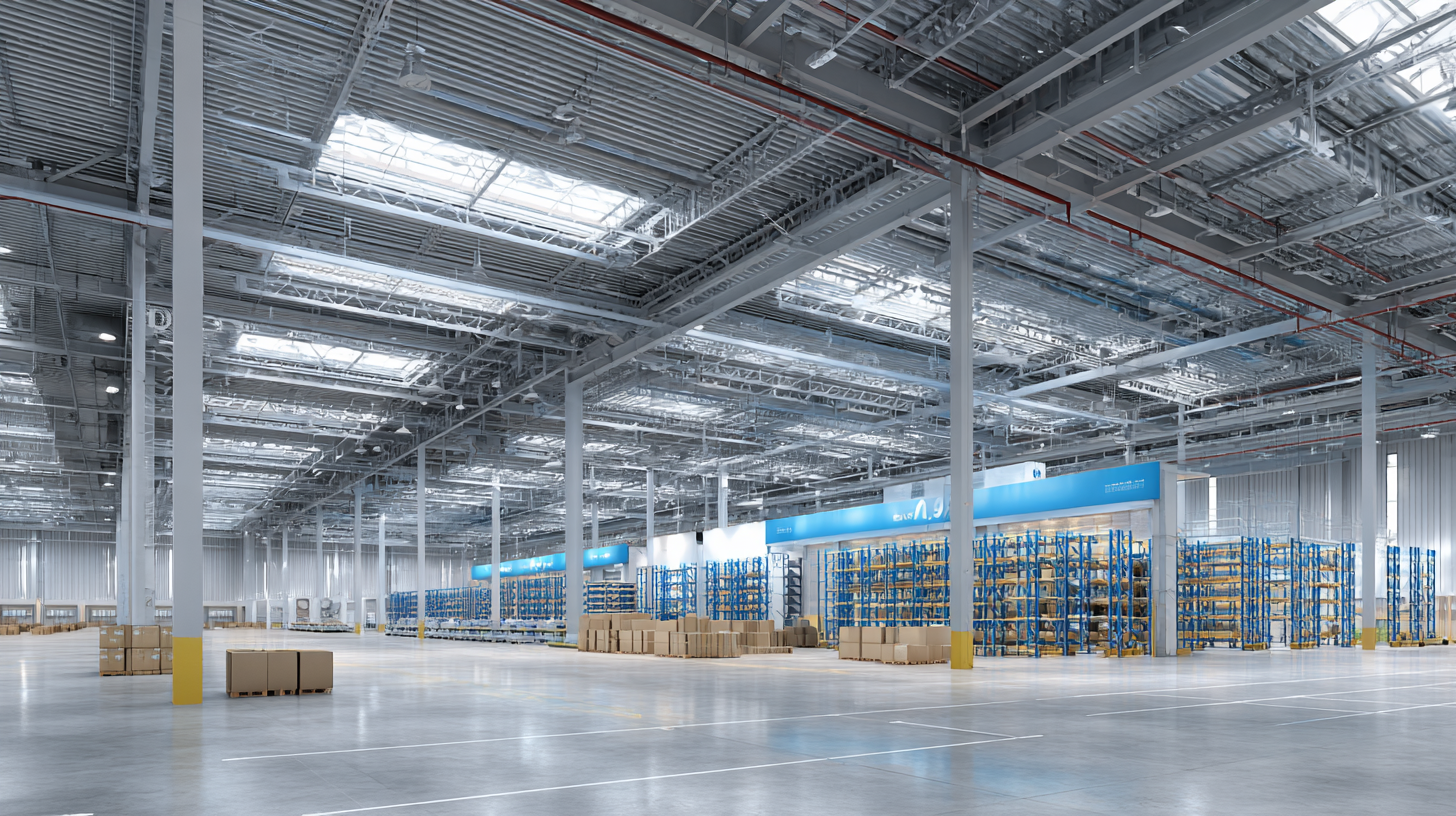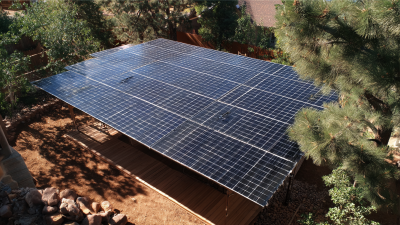ALL PRODUCTS
- Solar Panel
- Hybrid Inverter
- Lithium Battery
GSB SOLAR LITHIUM BATTERIES
- Gel Battery
- Solar Street Lights
- Pump Inverter
 The rapid evolution of the solar energy sector has significantly influenced various industries, including logistics and warehousing. At the 138th Canton Fair 2025, the spotlight is on the transformative role of solar warehouses in the face of increasing energy demands and sustainability goals. According to a report by the International Energy Agency, solar energy capacity reached 1,000 gigawatts in 2022, demonstrating a compound annual growth rate of over 20%. This surge emphasizes the necessity for innovative storage solutions that leverage clean energy, particularly in warehousing environments. Solar warehouses not only reduce operational costs but also minimize carbon footprints, aligning with China's commitment to peak carbon emissions by 2030. As industry leaders converge in Guangzhou, discussions will center around integrating solar technologies into warehousing processes to enhance efficiency and sustainability, paving the way for a greener logistics landscape.
The rapid evolution of the solar energy sector has significantly influenced various industries, including logistics and warehousing. At the 138th Canton Fair 2025, the spotlight is on the transformative role of solar warehouses in the face of increasing energy demands and sustainability goals. According to a report by the International Energy Agency, solar energy capacity reached 1,000 gigawatts in 2022, demonstrating a compound annual growth rate of over 20%. This surge emphasizes the necessity for innovative storage solutions that leverage clean energy, particularly in warehousing environments. Solar warehouses not only reduce operational costs but also minimize carbon footprints, aligning with China's commitment to peak carbon emissions by 2030. As industry leaders converge in Guangzhou, discussions will center around integrating solar technologies into warehousing processes to enhance efficiency and sustainability, paving the way for a greener logistics landscape.
The 138th Canton Fair 2025 showcased groundbreaking innovations in solar warehousing solutions, positioning the event as a key player in the industry's evolution. The demand for solar energy storage systems is on the rise, with reports indicating that the global solar energy storage market is expected to reach $25 billion by 2026. Key players in the industry leveraged the fair to highlight their latest advancements, focusing on efficiency, reliability, and sustainability in warehousing technologies.
Companies presented state-of-the-art solutions that integrate artificial intelligence to optimize storage and distribution processes. These innovations not only enhance operational efficiency but also contribute to reducing carbon footprints. For instance, advanced tracking systems ensure that solar energy is effectively stored and utilized, catering to increasing consumer demands for eco-friendly energy solutions.
**Tip:** When exploring solar warehousing options, consider systems that offer real-time monitoring and predictive analytics to maximize performance and efficiency.
Additionally, networking opportunities at the fair allow companies to forge partnerships that drive further innovation. The integration of cutting-edge technology into solar warehousing is not just a trend but a necessary evolution to meet global energy challenges sustainably.
**Tip:** Collaborate with industry experts to stay ahead of developments in renewable energy storage solutions, ensuring your warehousing strategy remains competitive and efficient.
The 138th Canton Fair in 2025 showcased a remarkable array of sustainable energy products, reflecting the ongoing transformation within the solar warehousing sector. As global demand for renewable energy surges, recent reports indicate a projected growth of the solar energy market to over $1 trillion by 2026, driven by innovations in photovoltaic technologies and energy storage solutions. There was a notable emphasis on advanced solar modules that boast higher efficiency rates, some exceeding 22%, as manufacturers strive to meet the escalating energy needs while minimizing environmental impact.
In addition to solar panels, the fair spotlighted cutting-edge warehousing technologies specifically designed for renewable energy products. Data from the International Renewable Energy Agency (IRENA) suggests that the global market for renewable energy equipment storage solutions is expected to reach $500 billion by 2028. Key trends featured at the fair included the integration of IoT and AI in supply chain management, enhancing inventory accuracy and predictive analytics, which are critical for optimizing warehouse operations. With increased investment in sustainable practices, companies that adapt and innovate in their warehousing strategies are well-positioned to lead in this rapidly evolving market.

The 138th Canton Fair in 2025 has emerged as a pivotal event in reshaping the global solar supply chain dynamics, highlighting the increasing interconnectivity of markets and the influence of emerging technologies. According to a recent report by the International Renewable Energy Agency (IRENA), the solar industry is projected to reach a capacity of 3,000 GW globally by 2030, necessitating improved infrastructure and logistics to sustain rapid growth. The Canton Fair serves as a marketplace where manufacturers, suppliers, and distributors converge, fostering partnerships that can enhance efficiency and reduce costs across the supply chain.
One notable trend observed at the Fair is the rise of automation in warehousing and distribution systems, which is critical for managing the growing volume of solar products. A study by the Solar Energy Industries Association (SEIA) indicates that incorporating advanced warehousing technologies can decrease supply chain delays by up to 30%. As companies display innovative solutions at the Fair, the collaborative environment facilitates knowledge sharing that enhances agility and responsiveness in the global solar market. This synergy is essential as nations commit to ambitious renewable energy targets, further accelerating the demand for solar solutions worldwide.
| Dimension | Value |
|---|---|
| Total Solar Products Exhibited | 15,000+ |
| Number of Participating Countries | 40 |
| Percentage of Renewable Energy Focus | 65% |
| Forecasted Growth in Solar Warehousing Demand (2025) | 18% |
| Investment in Solar Technology by Global Suppliers (Billion USD) | 12.5 |
| Sustainability Initiatives Highlighted | 30+ |
| Average Participation Rate of New Exhibitors | 25% |
| Networking Opportunities Created | 1000+ |
The 138th Canton Fair in 2025 presents a unique platform for networking within the solar industry. As industry players gather, the potential for collaboration and innovation is immense. Attendees can engage with key stakeholders, enabling them to share insights and explore new business opportunities. With a diverse array of exhibitors, from manufacturers to investors, the fair offers a comprehensive view of the latest advancements in solar warehousing and logistics.
Tip: Prepare your elevator pitch in advance. A concise and compelling introduction can significantly impact your ability to connect with potential partners. Make sure to highlight your business's unique offerings and how they align with industry trends.
Additionally, attending workshops and seminars during the event can enhance your understanding of market dynamics. Not only do these sessions provide valuable information, but they also create informal networking opportunities with speakers and attendees who share similar interests.
Tip: Follow up with your new contacts after the fair. A simple email or LinkedIn message can reinforce your connection and open doors for future collaboration. Networking doesn’t end when the event does; maintaining these relationships is crucial for long-term success in the solar industry.
The 138th Canton Fair 2025 showcased significant innovations in solar warehousing, offering valuable insights into the future of this rapidly evolving sector. One of the most notable trends observed was the integration of artificial intelligence and automation technologies in warehousing operations. According to a recent industry report by Wood Mackenzie, the use of AI in supply chain logistics is expected to enhance efficiency by up to 20% by 2026, reducing both operational costs and the carbon footprint. This shift is crucial as the solar industry pivots towards sustainability, optimizing warehouse space while increasing the speed of distribution.

Tips for optimizing your solar warehousing operations include investing in smart inventory management systems that track stock levels in real-time. Utilizing predictive analytics can help anticipate demand spikes, ensuring that you are well-prepared for market fluctuations. Additionally, consider adopting renewable energy sources for your warehouse facilities; a study from the International Energy Agency indicates that solar installations can reduce energy costs by up to 75%, significantly improving the overall sustainability of your operations.
Another lesson from the fair is the importance of strategic partnerships. Collaborating with tech providers and logistics experts can lead to innovative solutions tailored to your specific needs. As highlighted in the Solar Energy Industries Association (SEIA) report, companies that leverage partnerships in their supply chains are poised to achieve higher growth, with some anticipating a market expansion rate of 15% annually. Embracing these insights will be essential for any stakeholder aiming to thrive in the competitive landscape of solar warehousing.






